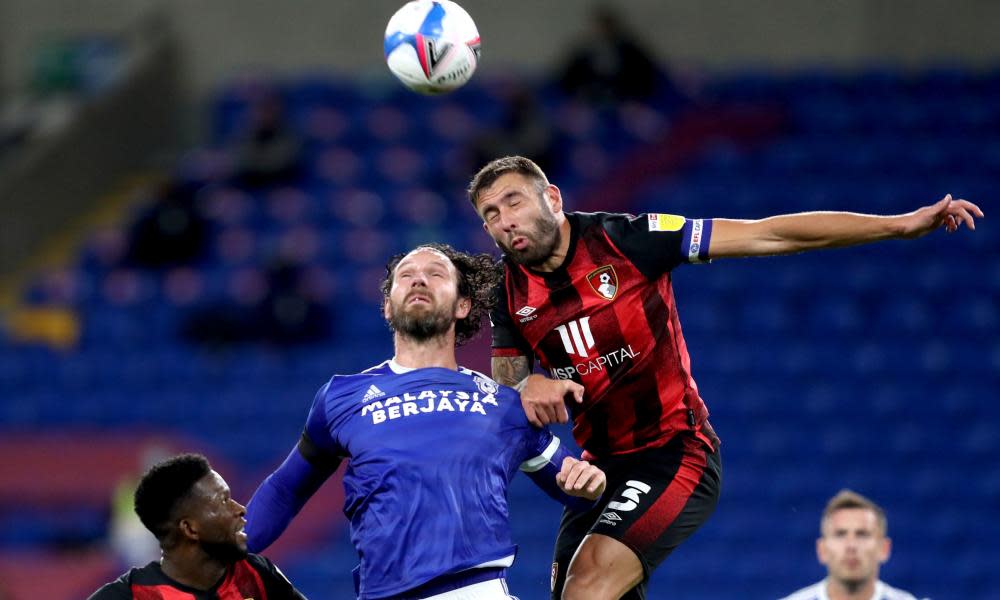Expert warns of 'hugely worrying' number of headers in football matches

Professional players are heading the ball in league matches with a frequency that is “hugely worrying”, according to a leading academic in the field.
Related: Why has it taken 50 years for football to connect heading with concussion? | Andy Bull
Statistics show that players in League Two have headed the ball more than 20 times in a match on 58 occasions this season. That figure declines higher up the football pyramid but even in the Premier League, where there are an average of 101 headers per game, players have exceeded 20 headers on seven occasions.
On Friday, the PFA called for an immediate reduction in the number of headers players undertake in training. These new numbers suggest that not only training, but competitive matches, could be putting players at risk.
The 20-header figure is central to a study conducted by Jake Ashton and James Roberts at Liverpool Hope University, who found that players who head the ball that number of times in a drill are likely to fail common pitchside tests for concussion.
The study required volunteers to head the ball in quick succession, but Ashton believes that even spread over the course of a 90-minute match such numbers would be a cause for concern.
“The key take aways from my study are that 80% of the participants failed a common pitchside test for concussion which would recommend them being removed from play,” Ashton said. “We also saw detriments in spatial and digit working memory post-heading compared to a control group of no heading. The fact this was after just 20 headers is hugely worrying and begs the question of the effect a lifetime of heading has.
“I think the main danger [to players] is the constant load in training drills and that’s the main area to target. However, if players are heading it that much in matches it’s an even bigger concern than originally thought and, yes, it would be very worrying.”
The development comes in the week the Professional Footballers’ Association announced a taskforce to further study the issue of brain diseases in football after an outcry over treatment of a generation of players – including several members of England’s 1966 World Cup squad – who developed dementia and other neurodegenerative conditions in the decades following their playing career.
Ashton’s study suggests that the risk of neurological damage has not been eliminated from the modern game and Opta statistics show just how central heading remains to the professional game, especially in the lower leagues.
Related: Clubs may need to hire neurologists as part of plans to combat concussion
According to the figures, over the course of the 140 matches played before Friday, there have been 20,582 headers in League Two. In League One there were 16,585 over 133 matches, and 17,116 over 132 games in the Championship. In the Premier League the first 78 games featured 7,840 headers.
During those matches a player has headed the ball more than 20 times on a total of 149 occasions. In the Championship, the highest number of headers recorded by a single player was 33 and there have been 47 occasions on which a player had headed the ball at least 20 times. In the Premier League 27 is the most headers by a player in a match. In League One and Two the figure is 30, and there have been 37 occasions in League One when a player had passed the 20-header mark.
Although a player is more likely to head the ball in training, the conditions under which they might do so during a match are more varied and potentially damaging.
“More research into the type of headers rather than just frequency is majorly important,” Asthon said. “For example, heading a corner increases angular velocity of the neck due to changing direction of the ball, possibly causing more damage than linear headers. Also, players are likely to head with more force in a match due to the competitive nature and are more likely to be in duels for headers, increasing the risk of head to head collisions.”

 Yahoo News
Yahoo News 
